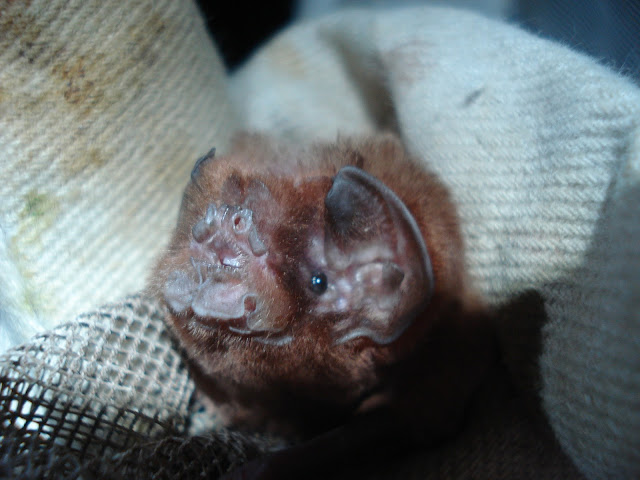I am back home from a recent trip to Trinidad where the bats were abundant and from what I could see roosting in almost any and every abandoned house/garage/store on the island. That may be a bit of an exaggeration but there are certainly many amazing bats in Trinidad. Trinidad itself is beautiful, while the people are fun, kind and diverse. The island country just off the coast of Venezuela is home to amazing animals, plants as well as
food! Just a word or two about the bats follow but I would suggest you read more about this interesting country if you find
time.
Together with researchers from several different institutions we captured many species of bats but here are some of the more photogenic:
The greater spear-nosed bat (
Phylostomus hastatus)
This very large bat makes very interesting vocalizations, roosts in groups and is known by bat biologists to have a forceful bite. That said these are fairly sweet bats and amazingly beautiful. Phylostomus eats fruits.
The ghost-faced bat (
Mormoops megalophylla)
This is the 'oh my gosh what happened to it's face!' bat. Mormoops is an insect eater and comes in beautiful shades of orange- in case you can peel your eyes away from its strange face long enough to appreciate its fur color. Why the weird face? well that's a story for another time but may have something to do with it's use of echolocation to find insect prey.
The short-tailed fruit bat (
Carollia perspicillata)
This tough looking little nose-leafed bat is the main bat studied on the island and lives in a variety of habitats. These little fruit-eating bats are quite small but are also famously good mothers and will take great care of a baby despite possible risks to the mother.
The Disk-winged bat (
Thyroptera tricolor)
Another insect-eater, these tiny little bats roost head-up (which is unusual for bats who usually hang upside down) inside of leaves as they unroll. Read more about how other sucker footed bats don't suck
here.
I hope to post more about T&T in the future but meanwhile I refer you to
Trinibats.com which has amazing photos and information about a suite of other bats.






